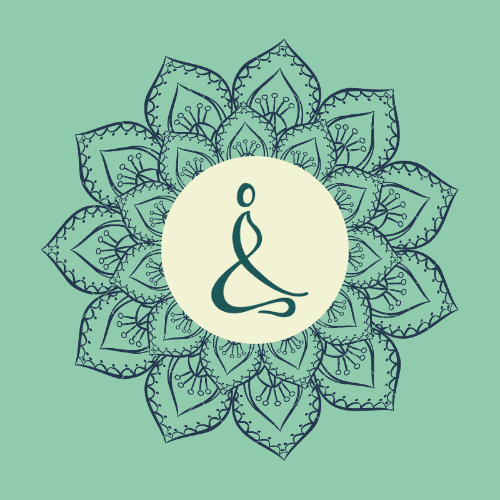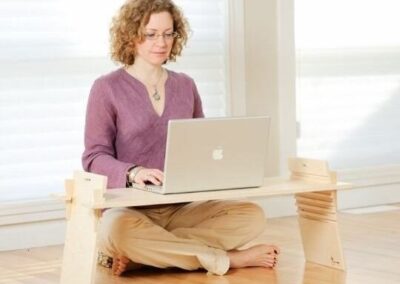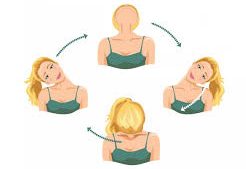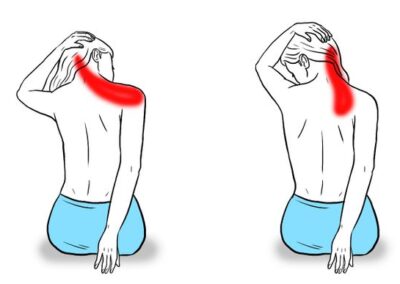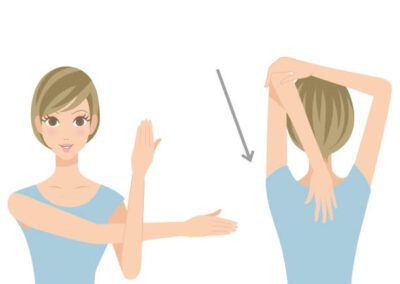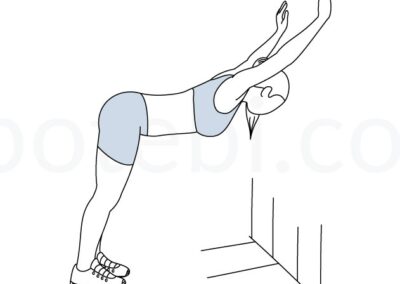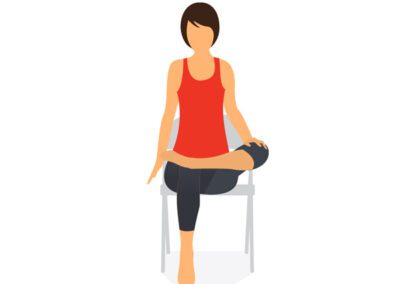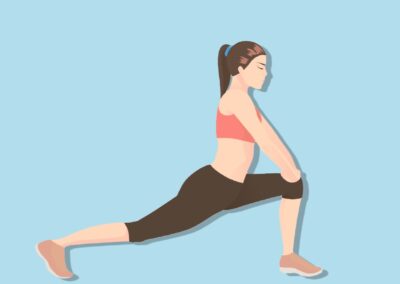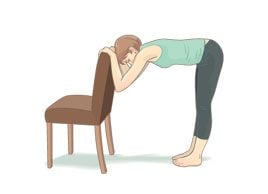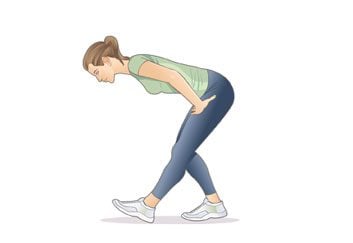Why Prolonged Sitting Is Dubbed ‘The New Smoking’
Maybe this comes as a shock to some of you but as harmless as it might look to be, prolonged sitting has the capacity to cause quite serious problems to our muscles, bones, organs and even our mind.
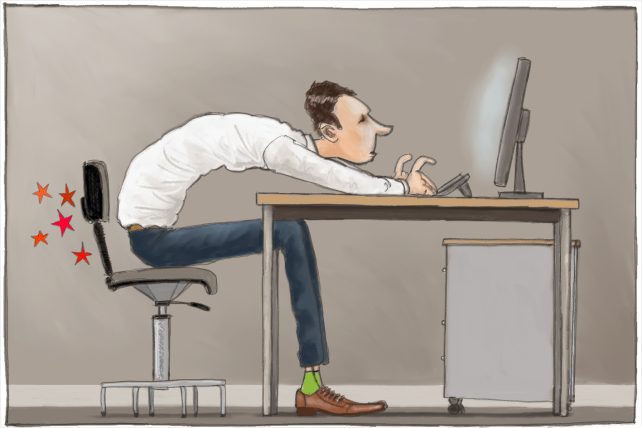
In the below post I have gathered information from various sources with the hope that it can give you a good idea of why we sometimes refer to prolonged sitting as ‘the new smoking’. Sedentary life impacts our body’s ability to function as it is supposed to and causes different conditions to creep up almost unnoticeably.
Read on to find out what actions you could take to limit the detrimental effects of sedentary living, which our bodies are not made for.
How A Healthy Human Body Functions
We are made up of 360 joints and over 700 muscles that move our skeleton. Our vascular and nervous systems depend on movement to function. Movement is vital for life! Our bodies are designed to move in all different directions; we run, jump, walk, swim, bend forward & backwards. It is movement that gives us healthy joints, strong bones, physical strength, good circulation. A healthy human body has optimal cardiovascular circulation, coordination and reflex reactivity, good learning skills and concentration, and mental well-being.
Regular movement is of utmost importance for our lymphatic system too. Unlike the cardiovascular system, which uses the heart to pump the blood around the body, the lymph system lacks such a pump. Therefore the lymph system relies entirely on movement to function at maximum efficiency. Without the squeezing of the lymphatic vessels by the movement of muscles all the toxins and waste materials begin to accumulate in our tissues. This in turn causes pain and inflammation and can lead to illness and a host of other problems.
Finally, a healthy lymph system is responsible for keeping the immunity of the body at check and helps the transportation of nutrients to all the cells.

How Prolonged Sitting Affects The Body
When we sit, we use less energy than we do when we stand or move. Research has linked sitting for long periods of time with a number of health concerns. They include obesity and a cluster of other conditions such as increased blood pressure, high blood sugar, excess body fat around the waist and abnormal cholesterol levels.
The various organs and body systems get affected by exessive sitting and their optimal function is compromised. Here is exactly how…
Back & Shoulders
The average person is not able to sit down for more than three minutes without falling into a slumped or ‘slouched’ posture. Over time, this creates wear and tear in our discs and joints, overworks our spinal ligaments and puts an enormous strain on our back muscles that are stretched to accommodate this slouched posture.
Leg Muscles
Sitting down for long periods can lead to muscle atrophy in the leg and gluteal areas. Sitting also causes hip flexor muscles to shorten, leading to issues with the hip joints. Prolonged sitting can lead to poor circulation and swollen ankles, varicose veins and even deep vein thrombosis. Our hamstring muscles are also being continuously compressed, blood supply is limited and their strength and elasticity is reduced.
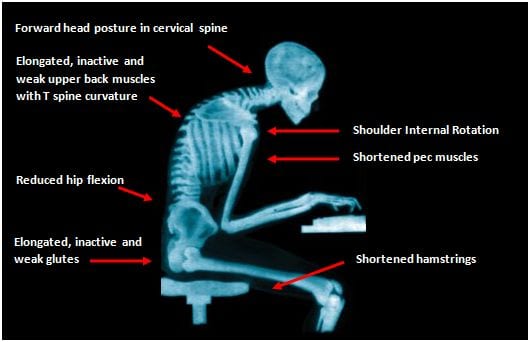
Cardiovascular System
We as humans, were built to stand up – and our heart and cardiovascular systems work more effectively this way. Prolonged sitting is also responsible for deactivating an enzyme called lipoprotein lipase, which is responsible for the breakdown of fats in the blood vessels, and can lead to blockage of the blood vessels in the heart.
Lung Function
When we sit down all day, due to lung compression from the posture, we also reduce the amount of oxygen entering our body. And we all know that oxygen is energy. So by sitting down we are cutting down on the amount of energy we consume from the environment.
Brain Power & Concentration
The longer we sit, the more sluggish our brain becomes. Prolonged sitting can limit the fresh blood and oxygen supply to the brain, meaning it can decrease levels of our ‘feel-good’ hormones, endorphins, and slow our brain function.
Digestion
Sitting down can cause our abdomen to compress, which in turn slows down digestion. This can lead to issues such as bloating, heartburn and constipation.
Main Muscles Affected By Prolonged Sitting
Below I have focused mainly on the effects of sitting on three musculoskeletal groups, with a bit more detail on how exactly the dysfunction of these muscles affects our body. Suggestions for prevention and some useful stretches are included at the end.
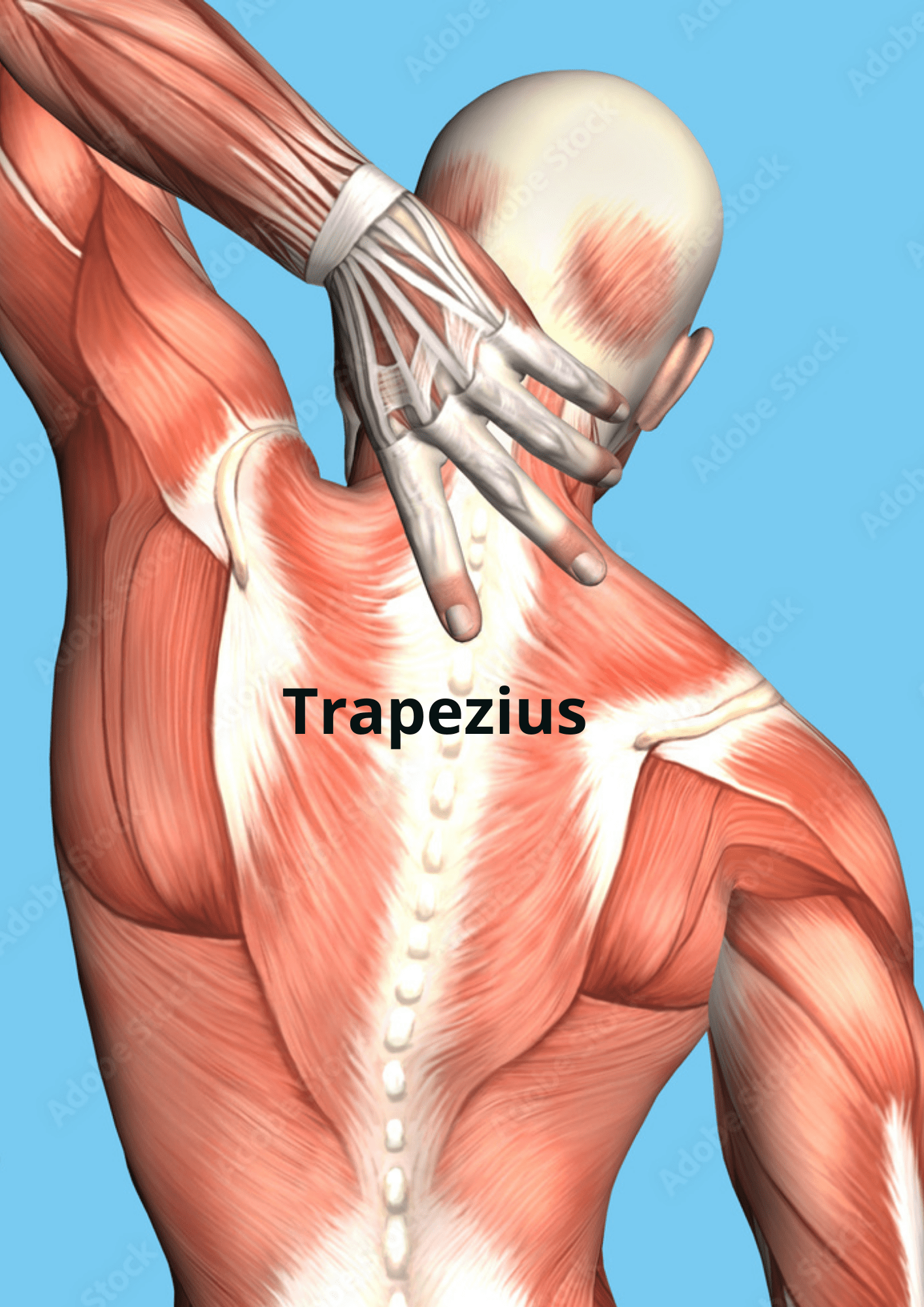
Shoulders, Neck & Back
We tend to associate shoulder pain with sports such as tennis and baseball, or with the aftermath of moving around our living room furniture. Few would ever suspect that the cause is often something
as typical and inactive as sitting at our desks. However, it turns out that staring at our computer screens for more than eight hours a day can have an enormous impact on our shoulders’ deltoid, subclavius, and trapezius muscles.
Slumping forward overextends the shoulder and back muscles particularly the trapezius which connects the neck and the shoulders. Muscle fatigue of the trapezius can cause two different conditions.
First, the over-activity of the trapezius compresses the spinal segments of cervico-thoracic junction and causes a beefy hump to develop at the top of the back. This is the so called dowager’s hump. The neck and upper back become painful from the chronic compression. Over time, neck movements become stiff and the upper body becomes more stooped. The shoulders lose mobility as the pectoral muscles adaptively shorten and the elbows develop flexion contractures.
Shoulders, Neck & Back
We tend to associate shoulder pain with sports such as tennis and baseball, or with the aftermath of moving around our living room furniture. Few would ever suspect that the cause is often something
as typical and inactive as sitting at our desks. However, it turns out that staring at our computer screens for more than eight hours a day can have an enormous impact on our shoulders’ deltoid, subclavius, and trapezius muscles.
Slumping forward overextends the shoulder and back muscles particularly the trapezius which connects the neck and the shoulders. Muscle fatigue of the trapezius can cause two different conditions.
First, the over-activity of the trapezius compresses the spinal segments of cervico-thoracic junction and causes a beefy hump to develop at the top of the back. This is the so called dowager’s hump. The neck and upper back become painful from the chronic compression. Over time, neck movements become stiff and the upper body becomes more stooped. The shoulders lose mobility as the pectoral muscles adaptively shorten and the elbows develop flexion contractures.

Hip Flexors
Lower back pain is a common problem for most of us and since the health of our lumbar spine (the lower spine) is directly affected by the action of the hip flexors and hamstrings. Our hip flexors are a group of muscles located along the abdomen and upper thigh. They connect the vertebrae of the lumbar spine to the pelvis and thigh bone thus connecting upper to lower body, posterior to anterior and inner to the outer aspects of the human body. They are one of the strongest muscle groups we have, and when we do not work it out properly, this can result in knee pain, back discomfort and incorrect posture.
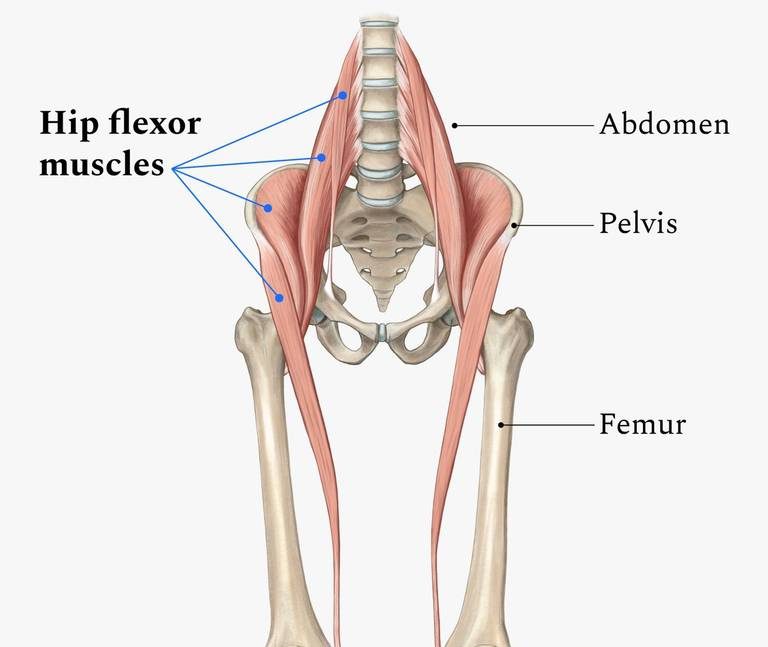
As we’re sitting in our chair, the angle between our torso and our thigh is shortened. This causes the muscles in the front of our hips also to shorten (see image below). Over a long period of time sitting day after day, our hip flexors will begin to tighten in this position, which can cause numerous issues, including lower back pain and lumbar lordosis. See image below.

Psoas Muscle
The psoas muscle, which is one of the hip flexor muscles, flexes the hip joint and raises your lower legs. If this muscle is too short it can pull on the spine and compress the discs and vertebral joints associated resulting in an anterior pelvic tilt and discomfort due to an over- arched lower back. If the psoas is always tight it increases the amount of compression and pain in the back, so stretching and strengthening this muscle is essential to back health.
Hamstrings
Our hamstrings are a group of three muscles running down the backside of our legs that connect the sitting bones to the top of the calves and shin bones.
If we spend the majority of our time sitting then our legs remain bent for most of the time. And when they are bent the hamstrings are not only shortened but also compressed. If we remain in this seated position for too long then our body adapts the muscles to this position. So later when we come to a stand and straighten the legs, our hamstrings will feel tighter.
It is good to remember here that nothing in the body works in isolation – everything is connected. Our bodies are intelligent master adapters and if we sit down all day our bodies will adapt to sitting! Any hamstring imbalance has implications broader than just localized tension in the back of the thighs. Overly short or tight hamstrings can pull the top of the pelvis backward, creating a posterior pelvic tilt just like in the image shown.
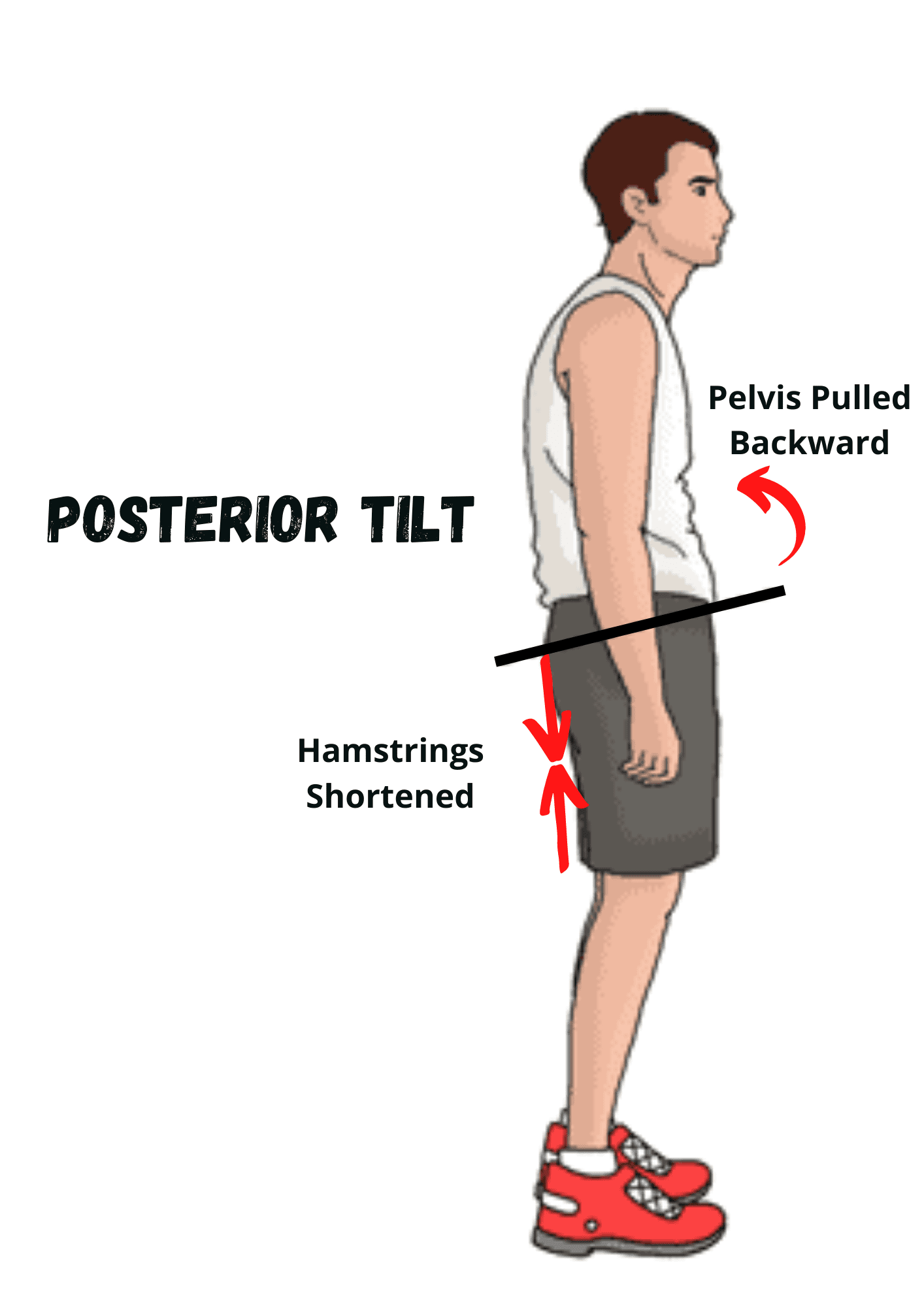
How To Cure The Effects Of Prolonged Sitting
So as we have seen from all the above, prolonged sitting can have severe negative impact on our overall health and wellbeing. But fear not! As with everything else – information is widely available and you hold the power to change your life for the better. You can build a healthier routine into your lifestyle, starting from today, and counteract the negative effects of sedentary life. What is good to remember is that we cannot undo years of bad habits overnight. Patience, perseverance and diligence are key!
Here I give you a few simple ways to get your muscles stretched and your blood moving.
- Stand up when talking on the phone.
- Set a timer on your phone for 30 minutes and stand up from your desk and walk around for a minute or two.
- Have standing or walking meetings.
- Go out at lunchtime instead of further increasing the sitting down period in your day.
- Learn to improve your seating posture. The better you sit, the less the effects on your spine, ribcage and lungs.
- Invest in a standing desk, floor desk or a a chair that allows you to sit cross-legged.
- Whenever you can avoid sitting on furniture. Instead try sitting cross-legged on the floor, use a cushion to elevate your sitting bones and to create more comfort. This will encourage hip-flexor lengthening and will gradually increase the mobility of your knees.
- Walk. Get off two-three stops before yours and walk.
- Massage your muscles using foam rollers or just go to a massage parlour.
- Exercise, stretch and do yoga, which is great for your general physical and mental health and great for your flexibility.
Neck, Shoulder, Hip Flexor & Hamstring Stretches
Below I have compiled some easy stretches which can be done at any time and you can do most of them sitting or with the help of a wall or a chair.
The shown exercises target the muscles that are most affected by prolonged sitting. For best effects perform at least once a day and combine with a min 20-30 min walk. The rule here should be – the more you sit, the more you should stretch and move.
When doing the stretches take 5 to 10 long breaths while holding them, then move to the next exercise. This set of 8 stretches shouldn’t take you more than 8 – 10 mins to complete – the perfect coffee break 🙂
Move More, Sit Less & Practice Sitting Cross Legged!
To conclude… and reconfirm what we already know – movement is key to a healthy, strong body. So let us make an effort to understand it, treat it well, feed it well and you will be able to enjoy a much happier, pain free living. I hope you have found this article helpful and that it will encourage you to make changes in your daily life.
Looking forward to your comments and suggestions below. I wish you happy stretching!
To read more of my blogs please click here.
Love & Light
Evelina

